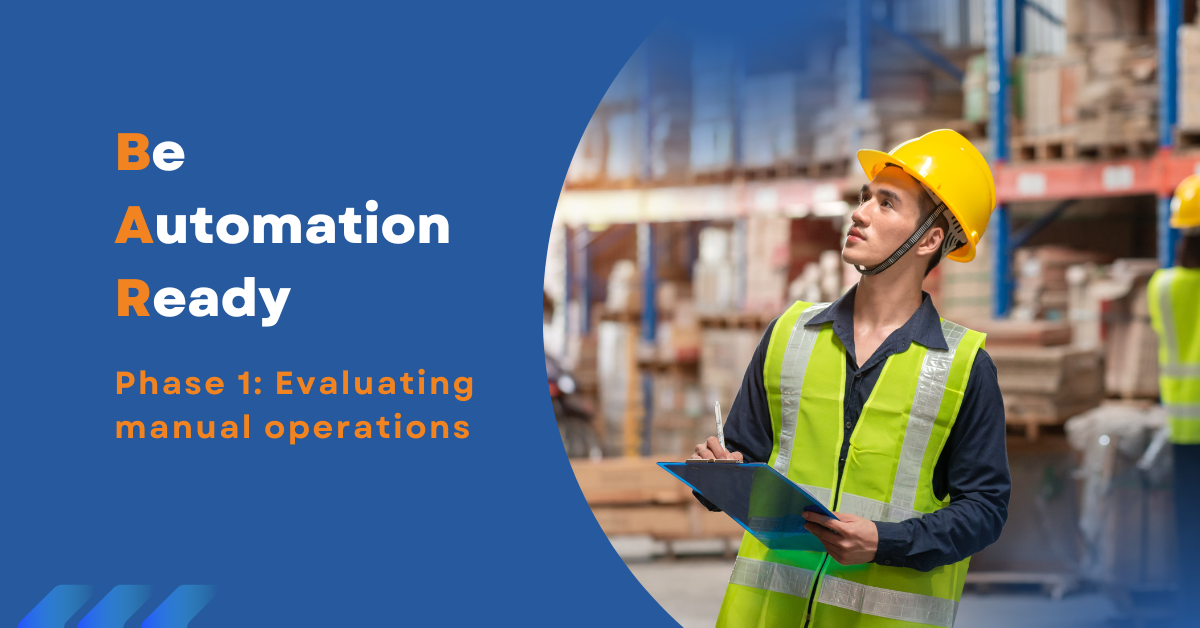


In today’s fast-paced supply chain environment, staying competitive requires constant evolution. Warehouses, often at the heart of operations, are no exception. As consumer expectations rise, companies must find ways to improve efficiency, accuracy and scalability while managing costs.
One way to do just that is automation, and many warehouses and distribution centers (DCs) are already on board. According to Gartner, by 2028, 80% of warehouses and distribution centers will deploy warehouse automation.
Whether you are a seasoned automation adopter or just dipping your toe in for the first time, we’ve tapped some of GreyOrange’s most experienced and knowledgeable experts to create a content series to help guide you through the journey from manual workflows to fully automated systems.
This BAR (Be Automation Ready) series introduces a multi-phase framework for achieving warehouse automation and breaks down the transformation into digestible steps, focusing on practical solutions at each stage of automation. We begin with the fundamentals: understanding where you are today and building a strong foundation for change.
Before diving into new technology, it’s essential to know where you stand. Phase 1 focuses on assessing manual operations to identify inefficiencies and opportunities for improvement. Key areas like picking, packing and order accuracy often reveal bottlenecks that hinder productivity and customer satisfaction. While 55% of fulfillment center spend is generally tied to order picking, every organization has a different profile. Focusing on the areas with the greatest potential ROI will create self-funding initiatives down the line.
Manual operations often lead to challenges such as:
However, these inefficiencies are opportunities in disguise. Understanding them helps build a clear case for automation and ensures that any changes align with your business goals.
While there are many frameworks for assessment, the concepts tend to remain the same.
Align on the most significant pain points. Talk to your warehouse teams — they are on the front lines and can offer invaluable insights into what works and what doesn’t. Look for common complaints like:
Some key areas for goal-setting include:
Create a detailed flowchart of your warehouse workflows, from receiving goods to shipping orders. Focus on tasks like:
By visualizing these processes, you’ll uncover inefficiencies, redundancies and dependencies.
Use key performance indicators (KPIs) to measure how your warehouse is currently performing:
This data provides a baseline from which to measure the impact of future improvements.
Observe workers performing key tasks like picking, packing and replenishment. Track how long it takes to complete each activity and note inefficiencies, such as:
If your warehouse uses basic tools like spreadsheets or standalone systems, consider how they might limit visibility and decision-making. Look for gaps where an advanced Warehouse Execution System (WES) like GreyMatter could provide immediate improvements, such as task orchestration or inventory tracking.
Understanding your current operations not only reveals inefficiencies but also builds a clear case for change. This phase ensures your automation journey is data-driven, gradual and aligned with your business goals.
Our BAR series will continue to explore how to optimize operations and implement warehouse automation incrementally:
Each phase provides actionable insights and practical steps to help businesses evolve at their own pace. By starting with small, impactful changes and gradually scaling up, this approach ensures a smooth transition from the essentials to advanced automation. And these changes add up to big savings – from labor to transportation. A thoughtful and intentional transformation has a significant impact on the bottom line.
Stay tuned for the next BAR post, where we’ll explore how tasking systems bridge the gap between manual operations and automation.
Is your warehouse ready to embark on this journey? Join us in Atlanta on February 4, 2025 for an immersive BAR experience, complete with robots in action, tips and best practices, lunch, and networking. Contact us for more information.